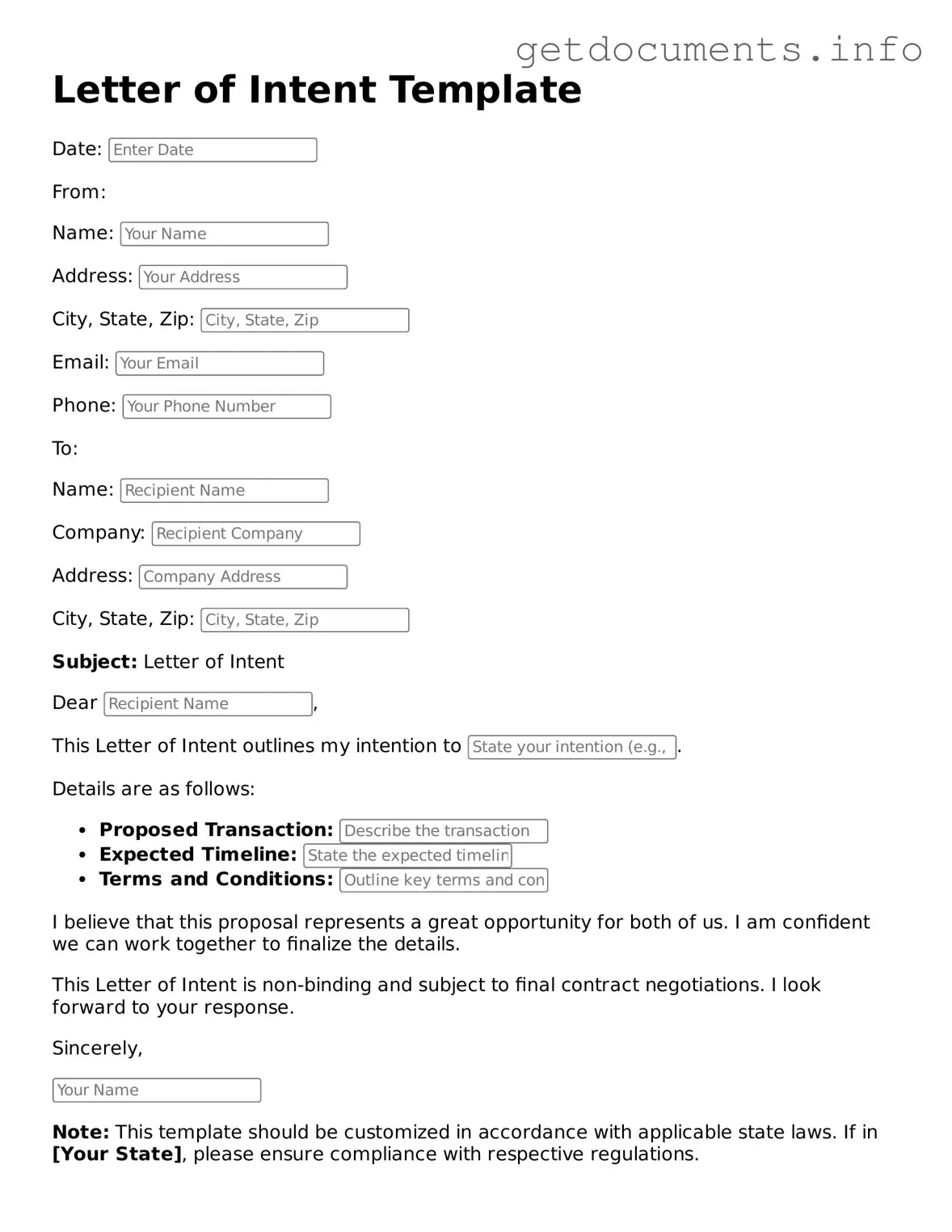A Letter of Intent (LOI) serves as a crucial document in various business transactions, signaling the intent of one party to engage in a formal agreement with another. This form typically outlines the key terms and conditions that both parties agree upon, providing a framework for future negotiations. It often includes details such as the purpose of the agreement, timelines for execution, and any preliminary financial considerations. While an LOI is generally non-binding, it establishes a mutual understanding and can include clauses that protect confidential information. By clarifying the intentions of both parties, the LOI helps prevent misunderstandings and sets the stage for a more formal contract. Understanding the components of an LOI is essential for anyone involved in business dealings, as it can significantly influence the negotiation process and the eventual contract outcome.
